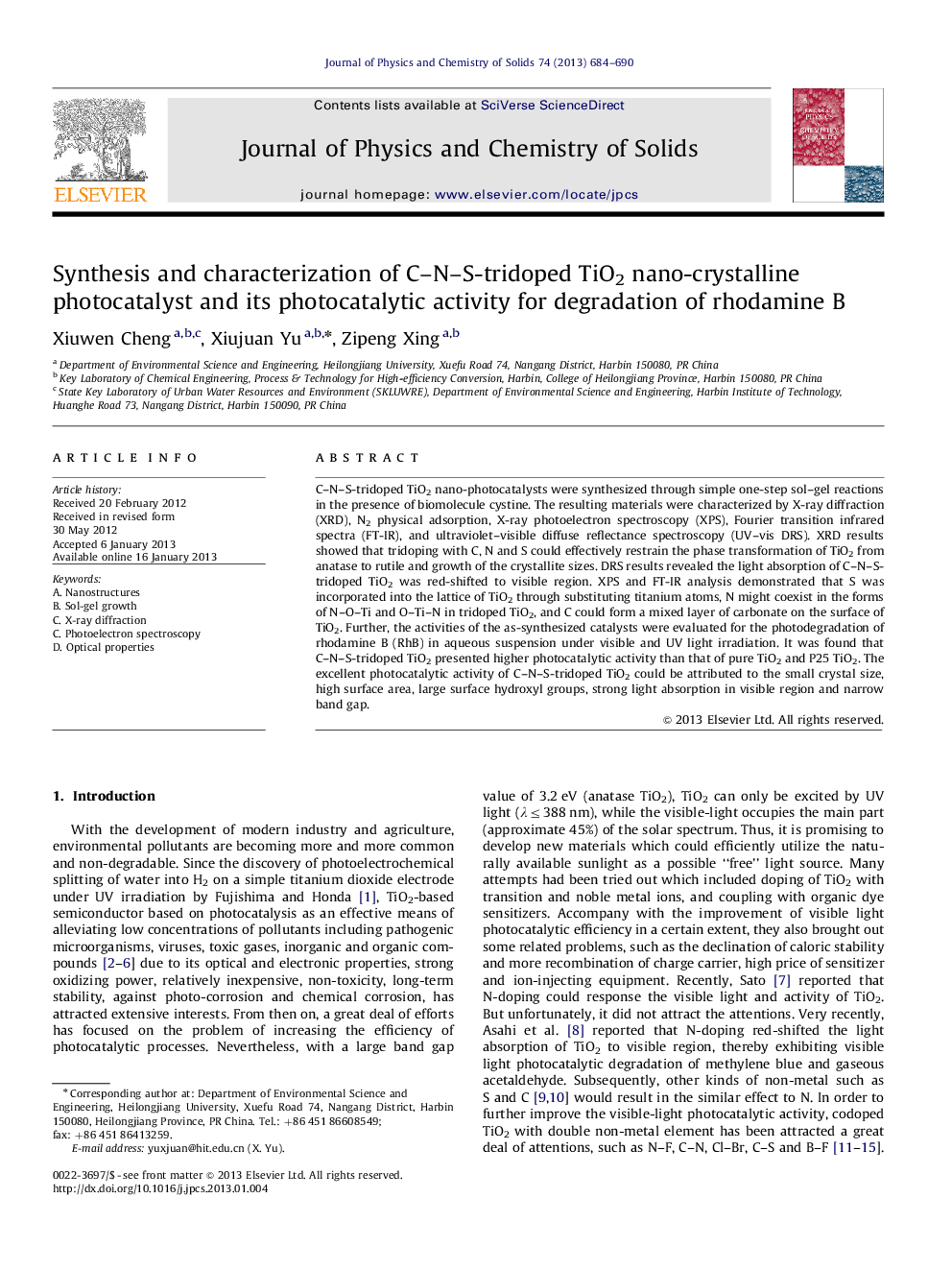| کد مقاله | کد نشریه | سال انتشار | مقاله انگلیسی | نسخه تمام متن |
|---|---|---|---|---|
| 1515890 | 1511549 | 2013 | 7 صفحه PDF | دانلود رایگان |

C–N–S-tridoped TiO2 nano-photocatalysts were synthesized through simple one-step sol–gel reactions in the presence of biomolecule cystine. The resulting materials were characterized by X-ray diffraction (XRD), N2 physical adsorption, X-ray photoelectron spectroscopy (XPS), Fourier transition infrared spectra (FT-IR), and ultraviolet–visible diffuse reflectance spectroscopy (UV–vis DRS). XRD results showed that tridoping with C, N and S could effectively restrain the phase transformation of TiO2 from anatase to rutile and growth of the crystallite sizes. DRS results revealed the light absorption of C–N–S-tridoped TiO2 was red-shifted to visible region. XPS and FT-IR analysis demonstrated that S was incorporated into the lattice of TiO2 through substituting titanium atoms, N might coexist in the forms of N–O–Ti and O–Ti–N in tridoped TiO2, and C could form a mixed layer of carbonate on the surface of TiO2. Further, the activities of the as-synthesized catalysts were evaluated for the photodegradation of rhodamine B (RhB) in aqueous suspension under visible and UV light irradiation. It was found that C–N–S-tridoped TiO2 presented higher photocatalytic activity than that of pure TiO2 and P25 TiO2. The excellent photocatalytic activity of C–N–S-tridoped TiO2 could be attributed to the small crystal size, high surface area, large surface hydroxyl groups, strong light absorption in visible region and narrow band gap.
► C–N–S–TiO2 was successfully synthesized by the addition of biomolecule cystine.
► The light absorption edge of C–N–S–TiO2 was greatly red-shifted to 800 nm.
► C–N–S–TiO2 exhibited higher activity than that of others under visible irradiation.
► The activity enhanced-mechanism of C–N–S–TiO2 was discussed in detail.
► This study provides a new way to synthesize visible light nano-photocatalyst.
Journal: Journal of Physics and Chemistry of Solids - Volume 74, Issue 5, May 2013, Pages 684–690